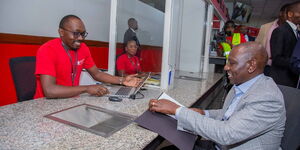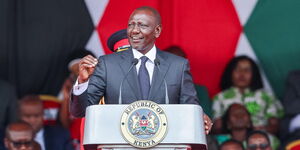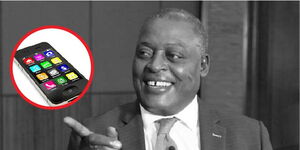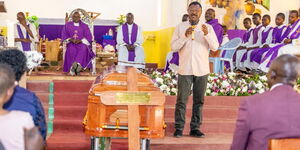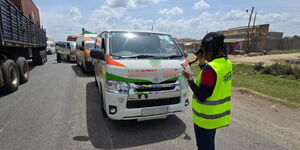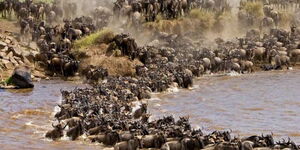Hola GK Prison remains symbolic of colonial brute force, that incarcerated many Kenyans including First Vice President Jaramogi Oginga Odinga.
The story of Jaramogi at the uncharted Hola GK Prisons dates back to 1959 when British colonial forces committed one of the most savage massacres at the detention camp.
"By then, Hola was offered an inhumane detention camp for some 506 detainees of whom 127 were held in a secluded "closed camp," Historian Soskic Franc recounted.
Tables soon turned against Jaramogi who was among the key political icons who were viciously pushing the Brits to surrender self-rule to Kenya.
Twenty-four years after the 1959 Hola massacre, Jaramogi found himself incarcerated and obscured in the same general prison life that he shared by ragtag warriors.
Jaramogi spent 18 months at Hola Prison, where he reaffirmed his patriotism, courage, radically unbowed spirit, and his determination not to die in detention.
Jaramogi's imprisonment in 1983 did not stop him from pushing for more democratic space in the country's political scenes.
In fact, the plan to rehabilitate Jaramogi from radical views on democracy fell-flat when he regain his freedom after 18 months of incarceration.
While in the prison, Jaramogi was also given the option of performing manual labour or obeying governmental orders, but he surprised prison warders when he chose to fight for the freedom of Kenyans and refused any other mitigation measure.
After serving his prison term, Jaramogi immediately made a comeback to national politics and particularly, the movement that led to birth of multi-party democracy.
It is recorded that Jaramogi turned down an opportunity to serve as Kenya's first Prime Minister during pre-independence negotiations with the British.
He asked the British to release Jomo Kenyatta from prison so that he could lead Kenya. Kenyatta and Jaramogi were great friends during the early days of independent Kenya.
He later returned to Hola GK Prisons to plat five trees, two of which are still standing tall at the snake and scorpion infested compound.
One of the trees is still planed right by the gate while the other is in the middle of the compound that is highly guarded.
Hola GK Prison walls are smeared with blood of struggles for independence, post-independence democracy and many unsung heroes.
Pre-independence uprising saw British forces transfer a number of hard-core oath-taking Mau Mau uprising fighters to Hola where they were tortured and forced to denounce their culture.
Hola detention camp was remotely reserved for the most uncooperative of the detainees from other parts of the country like Mount Kenya region.
"As the camp expanded, the camp commandant outlined a plan that would force 88 of the detainees to bend to work," Soskic wrote.
Hell broke loose on March 3, 1959, when 11 of the detainees were clubbed to death by guards.
At the same time, all the 77 surviving detainees sustained serious permanent injuries, some of which later led to their deaths.
It is reported that Kenyan freedom fighters were already killing colonialists in record numbers.



